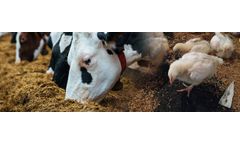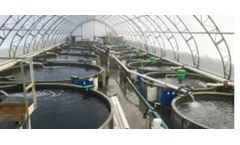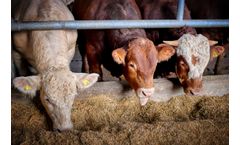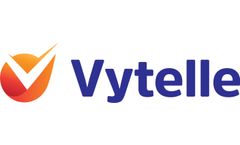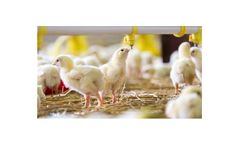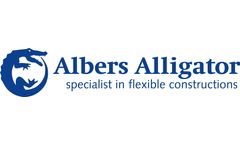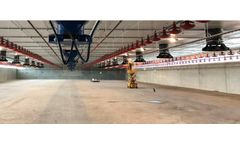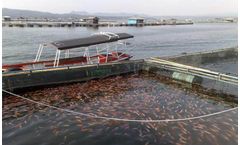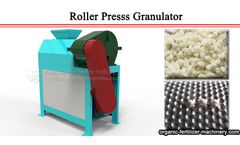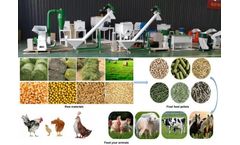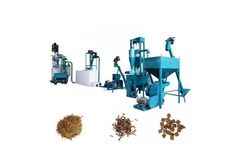Feed Conversion Articles & Analysis: Older
41 articles found
The application of biochar in livestock feed is gaining traction as a sustainable approach to improving animal digestion and overall health. ...
The Scientific Basis of Enzymes in Feed Enzymes are specialized proteins that act as catalysts in biochemical reactions, facilitating the breakdown of feed components into simpler, absorbable nutrients. ...
(http://www.randstadnieuws.nl/.../2726-animal-feed.../) Phytogenic are a relatively young class of feed additives and in recent years this feed additives have gained considerable attention in the feed industry. ...
By mitigating heat stress, bamboo biochar supports optimal poultry performance and welfare.Nutritional Supplement and Toxin Binding Bamboo biochar serves as a valuable nutritional supplement for poultry diets, providing essential minerals, trace elements, and organic carbon to support growth, digestion, and immune function. When included in feed formulations, biochar acts as a ...
As the global demand for seafood continues to surge, aquaculture has emerged as a vital solution to meet this growing need sustainably. However, fish farming comes with its challenges, one of which is maintaining optimal water quality to ensure the health and growth of aquatic species. This is where ozone technology, specifically Absolute Ozone® generators, is making a remarkable impact. ...
Each service platform contains the pumps, controls, feeding equipment, oxygen supply, waste handling system and other support equipment for its pod. ...
C. Reduced Feed Conversion Ratio Enhanced efficiency of feed utilization: Biochar's ability to improve nutrient absorption and utilization ultimately leads to a reduced feed conversion ratio. ...
Aquaculture is found to be one of the most efficient means of meat production, as shown by the feed conversion ratio provided by National Geographic in the article How to Farm a Better Fish. ...
The product is designed to increase feed palatability and digestibility for omnivorous fish aiming at the reduction of cost of feeds in farming. ...
Average feed conversion ratios (estimated kilograms of feed to produce a kilogram of meat) for broilers today are 1.7:1. In comparison, genetic progress for feed efficiency has been both inefficient and slow worldwide in cattle markets, with an average feed conversion ratio of about 6.8:1. ...
You should be able to record information on feed, hatching, breeding, broilers, and so on, as well as compute crucial factors like Mortality Ratio, Vaccination regimens, Feed Conversion Ratio (FCR), and so on. Furthermore, these pre-defined characteristics should help you organise the feed according to the timetables. 2. ...
Its affects can be cumulative and failure to minimize as many stressors as is possible increases the odds of disease issues, poorer growth, and higher feed conversions. Adequate aeration is essential. Animals should be reared at or close to saturation if electricity costs allow this. ...
A system of bag tank storage is putting a large-scale pig producer a step ahead of legislation that will require slurry stores to be covered by 2027. ...
Water is heavily contaminated with organics from feed and feces and chemicals used to mitigate poor culture practices. ...
The growth is slightly better and the feed conversion a few points lower in the DACS house. This does not seem like much, but everything adds up and we earn more money from the new house,” says Mark. ...
ByDACS A/S
It was shown that both chloride and potassium carbonate can be inserted into compound feeds for broilers in order to increase productivity and improve feed conversion. The use of potassium chloride in a dose of 1.5 kg / t of feed contributed to the increase in live weight of broilers at 34 days aged by 3.52% while reducing the ...
Extrusion processing technology has become of major importance in the aquatic feed pellet production line of modern feeds used in intensive aquaculture. ...
The machine reduces environmental pollution, reduces waste and powder packaging costs, and improves product transportation capabilities. 7. The feeding device adopts frequency conversion speed regulation control, which has a high degree of automation, can control multiple machines, low labor intensity, and long-term continuous operation. 8. ...
Many feed mills or farms use feed processing machine to make raw materials into pellet feed products, and then fed to animals. ...
Now poultry and animals fed with feed pellets, and feed producing also has special feed processing machinery. ...

